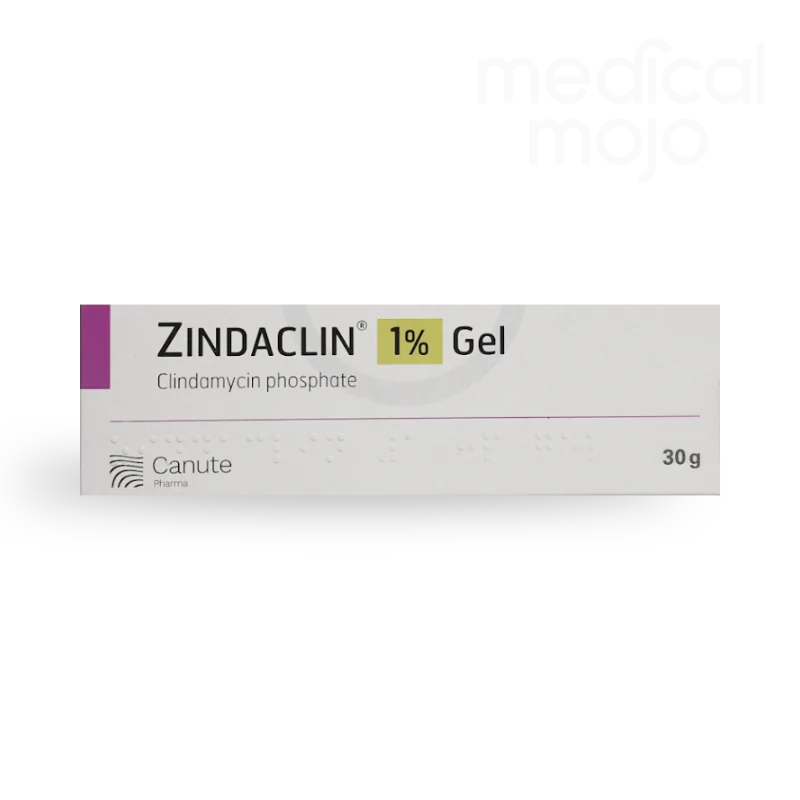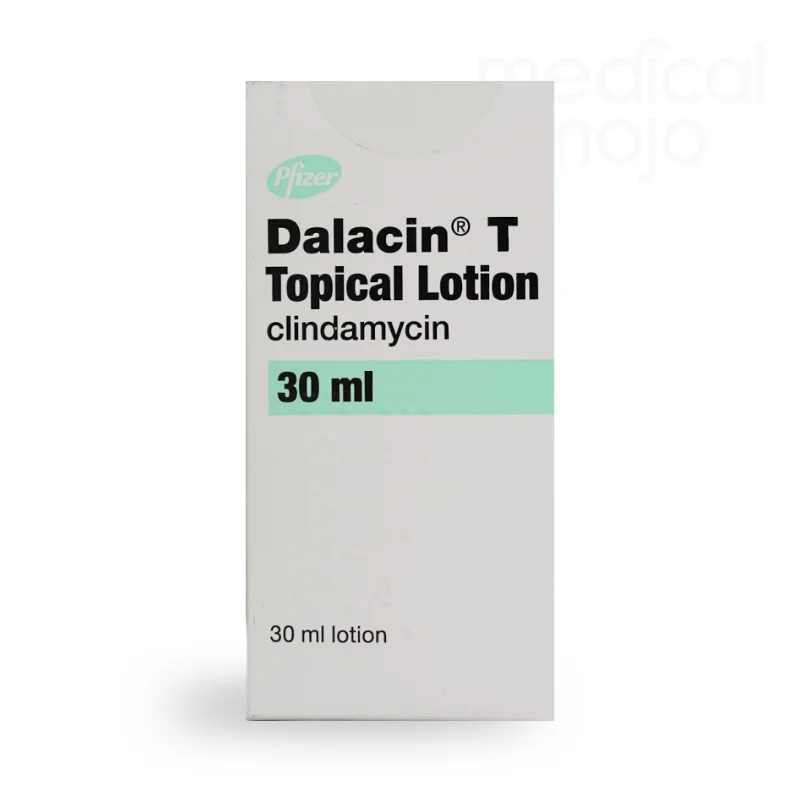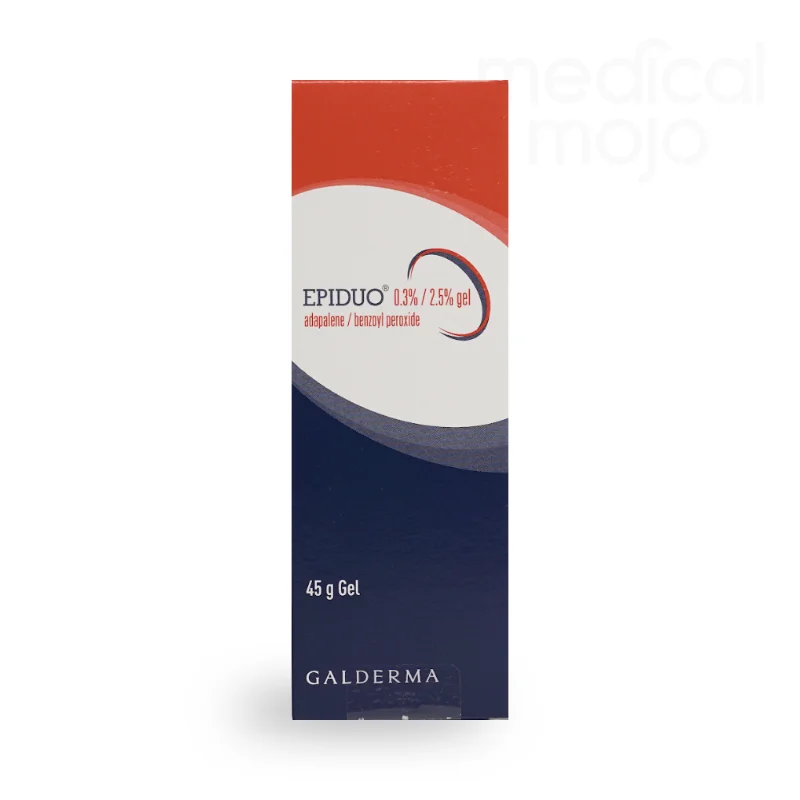What is Acnecide gel 30g?
Acnecide contains the active ingredient benzoyl peroxide, which targets the bacteria known as Cutibacterium acnes, a primary cause of acne. In addition to working as an antibacterial, Acnecide also to unblock the hair follicles. To learn more about what causes acne, read our blog: What is acne?.
What is the active ingredient in Acnecide gel 30g?
The active ingredient in Acnecide is benzoyl peroxide 5%.
What is Acnecide gel used for?
Acnecide is used to treat acne, a skin condition characterised by blackheads, whiteheads, pimples, and spots. It is particularly effective for treating acne on the face, chest, and back. The active ingredient, benzoyl peroxide, targets the bacteria, Cutibacterium acnes but also works to help unblock clogged pored.
How does Acnecide gel work?
Acnecide works by utilizing its active ingredient, benzoyl peroxide, which is a powerful antibacterial agent. Here's how it helps treat acne:
- Kills acne-causing bacteria: Benzoyl peroxide targets and destroys Cutibacterium acnes (formerly known as Propionibacterium acnes), the bacteria responsible for causing acne. By reducing the bacterial population on the skin, it helps to prevent and treat the formation of new acne lesions.
- Unclogs pores: Benzoyl peroxide also has a mild exfoliating effect, which helps to clear dead skin cells from the surface of the skin and unclog pores. This reduces the chances of blackheads and whiteheads forming.
- Reduces Inflammation: Although not strictly an anti inflammatory, benzoyl peroxide can reduce inflammation by eliminating a principle cause of it the bacteria C acnes.
By combining these effects, Acnecide helps to treat existing acne and prevent new breakouts, leading to clearer skin over time.
How do you use Acnecide gel 30g?
Always use this medicine exactly as described in the leaflet or as your doctor or pharmacist has directed. If you are still unsure of how to apply Acnecide gel and even if you want further advice regarding your acne, please contact us.
- External use only: Acnecide gel is applied on the skin and is only meant for external use.
- Application instructions:
- Wash the affected area with a mild skin cleanser and water, and then gently pat your skin dry.
- Apply a thin layer of the gel to the affected areas once or twice a day, unless otherwise advised by your doctor or pharmacist.
- If you have sensitive skin, apply the gel once daily, preferably before bed.
- If your skin becomes dry or starts peeling, reduce the frequency of application to once a day or every other day until your skin adjusts.
- Sunlight exposure: Try to avoid strong sunlight while using Acnecide. If exposure is unavoidable, use a suitable sunscreen and apply Acnecide in the evening.
- Duration of use: How long you need to use Acnecide depends on how quickly your condition improves. After one month of use, consult your doctor or pharmacist to assess your progress.
- If you use too much or swallow Acnecide: If you apply too much gel, your skin may become irritated. Wash off as much as you can, and once the irritation subsides, resume using the product as directed. If you accidentally swallow the gel, seek medical advice immediately.
- If you forget to use Acnecide: Don’t worry if you miss a dose. Simply apply the gel as usual when you remember.
If you have any further questions about using this medicine, please contact us.
What are the side effects with Acnecide gel?
Like all medicines, Acnecide can cause side effects, although not everyone will experience them.
If your skin becomes severely irritated, or if you experience severe redness, itching, peeling of the skin, or swelling of the face, discontinue use immediately and consult your doctor or pharmacist.
Contact your doctor right away if you develop a severe allergic reaction. Signs of a severe allergic reaction may include:
- Raised and itchy rash (hives)
- Swelling of the face, eyes, lips, tongue, or mouth (angioedema)
- Difficulty breathing
- Fainting
Acnecide may cause the following side effects:
Very common (may affect more than 1 in 10 people):
- Dry skin
- Skin redness
- Peeling of the skin
- Burning sensation of the skin
Common (may affect up to 1 in 10 people):
- Itching of the skin (pruritus)
- Skin pain (pain, stinging)
- Irritation (irritant contact dermatitis)
Uncommon (may affect up to 1 in 100 people):
- Allergic contact dermatitis
These symptoms are usually reversible if the treatment frequency is reduced or if use is discontinued.
Reporting of side effects: If you experience any side effects, talk to your doctor or pharmacist. This includes any side effects not listed in this leaflet. You can also report side effects directly via the Yellow Card Scheme at https://yellowcard.mhra.gov.uk or search for MHRA Yellow Card in the Google Play or Apple App Store. Reporting side effects can help provide more information on the safety of this medicine.
Frequently asked questions about Acnecide gel 30g
What is Acnecide 5% w/w Gel Benzoyl Peroxide?
Acnecide Gel contains benzoyl peroxide, a potent antiseptic that kills up to 95% of the bacteria responsible for acne, including spots, blackheads, and whiteheads. It is applied directly to the affected skin, where it quickly reduces bacteria and absorbs excess oil. Suitable for children and adults over 12, it should be applied up to twice a day to areas like the face, chest, and back.
What is Acnecide Gel used for?
Acnecide 5% Gel is used to treat acne, including spots and pimples. When used with a gentle cleanser (like Acnecide Purifide Daily Cleanser) and a non-comedogenic moisturizer, most users see improvements in their skin within a few weeks.
How does Acnecide Gel work?
Acnecide Gel works through its active ingredient, benzoyl peroxide, which has antiseptic properties that kill acne-causing bacteria on the skin. It also helps unclog pores by removing dead skin cells that can block them, treating existing acne and preventing future breakouts.
How long does it take for Acnecide to show results?
Most people notice an improvement within 2-4 weeks when used as directed. For best results, continue using Acnecide consistently as part of your skincare routine.
How long does Acnecide Gel take to work?
Acnecide Gel begins working immediately when used as directed—up to twice a day on all affected areas. Most users notice significant improvements in their skin within 2 to 4 weeks. For best results, use it alongside a gentle cleanser and a non-comedogenic moisturizer as part of your daily skincare routine.
How do you use Acnecide Gel?
Acnecide Gel is for external use by children and adults over 12 years old. Here’s how to use it:
- Wash the affected areas with a gentle cleanser and water, then pat the skin dry.
- Apply a thin layer of gel to all affected areas once or twice a day. If you have sensitive skin, start with a once-daily application in the evening.
- Gradually increase usage as your skin adjusts. If you experience dryness or peeling, reduce the frequency of application.
What are the ingredients in Acnecide Gel?
Active Ingredient:
Inactive Ingredients:
- Docusate Sodium, Disodium Edetate, Poloxamer 182, Carbomer 940, Propylene Glycol, Acrylates Copolymer, Glycerol, Colloidal Anhydrous Silica, Sodium Hydroxide, Purified Water
What are the side effects of Acnecide Gel?
Some users may experience side effects, including:
- Dry skin
- Redness
- Peeling
- Burning sensation
- Itching
- Pain or stinging
If these symptoms persist or worsen, consult a doctor or pharmacist. In rare cases, severe allergic reactions may occur, such as facial swelling, severe itching, or difficulty breathing. Seek immediate medical help if these symptoms appear.
Are there any warnings for using Acnecide Gel?
Yes, here are some important precautions:
- Acnecide Gel is for external use only. Avoid contact with eyes, mouth, nose, and other mucous membranes.
- Do not apply to damaged or broken skin.
- Avoid contact with hair, clothing, or colored fabrics, as the gel may bleach or stain them.
- Acnecide Gel can increase sensitivity to sunlight, so avoid prolonged sun exposure and use sunscreen.
- Consult a doctor or pharmacist before using other acne treatments simultaneously to prevent excessive skin irritation.
Can I use Acnecide Gel during pregnancy or breastfeeding?
If you are pregnant or breastfeeding, consult a doctor before using Acnecide Gel. If advised to use it while breastfeeding, do not apply the gel to the chest area.
Can Acnecide bleach clothes or towels?
Yes, Acnecide can bleach fabrics, including clothing, towels, and bed linens. Be cautious when applying it and wash your hands thoroughly after use.
Can Acnecide be used on areas other than the face?
Yes, Acnecide can be used on other areas prone to acne, such as the chest and back. Always follow the application instructions provided.











